With each passing year, Croatia seems to grow more popular with tourists searching for Europe’s most spectacular spots. With cities like Split on its Dalmatian coast, it’s easy to see why. Split is not only a culturally and historically important destination, but also the main gateway to Croatia’s most exciting coastal and island getaways. No wonder Split is a must on any good Croatia itinerary.
To get the most out of your visit, you’ll want to find the best places to visit in Split. With our itinerary, you’ll know exactly how to spend three days in Split so as not to waste a second.
Best Time to Visit Split
With any destination, the timing of your visit can make all the difference. The time of year you go affects various aspects of your trip, especially in a popular tourist destination like Split. The best time to visit Split depends on the activities you’re interested in, your preferred weather, and your budget.
Like the rest of Croatia, Split is best known as a summer getaway. Sunny days and clear skies are ideal for swimming, sailing, and alfresco dining, so summer is the high season in Split. The city is busy not only with those visiting Split, but also with those starting their yacht journey down the famous coastline. During this time, you could end up paying double or triple what you’d pay for accommodation in the low season, so a winter trip is preferable if your main concern is saving money.
However, not all the best things to do in Split are available all year. If you visit in winter, you may have the place to yourself, but swimming, sailing, and day-tripping out to the five islands won’t be possible.
May, September, and October offer a happy compromise between great weather and fewer people. During these shoulder months, it’s still warm enough to swim, tours are running, and prices aren’t quite as high as in summer.
How to Get Around Split
While visiting Split, you’ll find it’s not an overly complicated place to explore on your own. That mostly goes for the city itself, but even day trips aren’t that difficult. Most of the sights you’ll see in Split are squarely in the historic center, so you can comfortably walk between them.
When you head out on day trips, you can go with tour companies or use public transport. Frequent local and regional buses can take you most places you’ll want to go along the mainland coast. You can get out to the islands with regular ferries or more expensive speedboats, depending on which islands you visit and when.
Recommendation: Use Bookaway to easily compare and book bus, ferry, or train tickets to and from Split.
You have a couple options to get from Split Airport into the city. The cheapest is to hop aboard the Line 37 bus, which runs between Trogir and Split and takes 40 minutes to reach the main Split bus station. Alternatively, there is a slightly faster airport shuttle service that runs fairly frequently.
Where to Stay in Split
As a major tourist destination, Split offers plenty of accommodation options. Choosing from the best places to stay in Split is a simple matter of budget and travel style.
In terms of the area where you should stay in Split, the best option by far is the Old Town. Most of the city’s tourist attractions are in this area inside and around Diocletian’s Palace, making it the most convenient base for access to sights, transportation, and restaurants.
You won’t find a finer place to stay in Split than the five-star Hotel Park, which is only minutes from the Old Town and Bačvice Beach. You’ll be delighted with this idyllic hotel’s beautiful rooms and suites, outdoor pool, and on-site restaurant and bar.
You can also find abundant midrange lodgings in Split. A great example is Rooms Tomic, a cozy guesthouse right on the edge of the Old Town. With its courtyard patio and friendly owners, this boutique inn feels like a refuge from the lively city center.
Old Town Hostel Split is a great choice for backpackers looking to stay in the heart of the city. For other budget options, read our guide to the best hostels in Split.
You can also find a ton of nice places to stay on Airbnb. For recommendations, check out our guide to the best Airbnbs in Split.
For more accommodation options in Split, check out Booking.com. This site consistently offers the best rates, and its customer service is on point.
The Perfect 3-Day Split Itinerary
You’ll be surprised with all the places you can fit into 72 hours in Split. Though it’s a big city and popular with tourists, you don’t need too much time in order to say confidently that you’ve experienced it.
While you could strike out on your own and gradually find all the attractions, your visit will be a lot easier with the help of our Split travel itinerary. You’ll not only explore the most historic and beautiful spots in ancient Split, but also venture beyond the city. Split makes a great base from which to journey out along the coast and to neighboring islands.
However, before we get to our Split itinerary, we just wanted to remind you to purchase travel insurance. You never know what will happen and, trust us, you do not want to get stuck with thousands of dollars in medical bills. As a wise man once said, “If you can’t afford travel insurance, you can’t afford to travel.” So don’t leave home without it.
SafetyWing offers travel insurance for only about $10 a week, making it a no-brainer to get. You can get a quick, non-binding quote below:

SafetyWing is, of course, not the only option available. Two other popular alternatives are World Nomads and Heymondo.
Now that we’ve covered that important topic, let’s get back to our Split guide. We’ll show you what to do in Split in three days for a truly unforgettable visit to this Croatian gem.
Day 1 in Split
It only makes sense to start your visit by finding the very best of Split. Day one begins with the sights of Split’s ancient center around Diocletian’s Palace before you wander to the nearby attractions.
Recommendation: If you want to learn more about Split and Diocletian’s Palace, consider joining a guided tour. This walking tour comes highly recommended.
Diocletian’s Palace
One of the coolest facts about Split is that the Old Town started out as a single ancient Roman palace. Built for Emperor Diocletian’s retirement, this fortified palace took up much of the area that’s now the city center. Even with the changes over the centuries, it’s still clear where Diocletian’s Palace once stood.
As you enter the palace, you’ll pass through one of the four city gates, such as the Brass Gate, which connects it with the waterfront promenade. We’ll cover more specific places to see inside, but some general places to visit are the Old Town Hall, Fruit Square, and People’s Square (locally known as Pjaca). These spots give you a great sense of the city’s beautiful Venetian architecture.
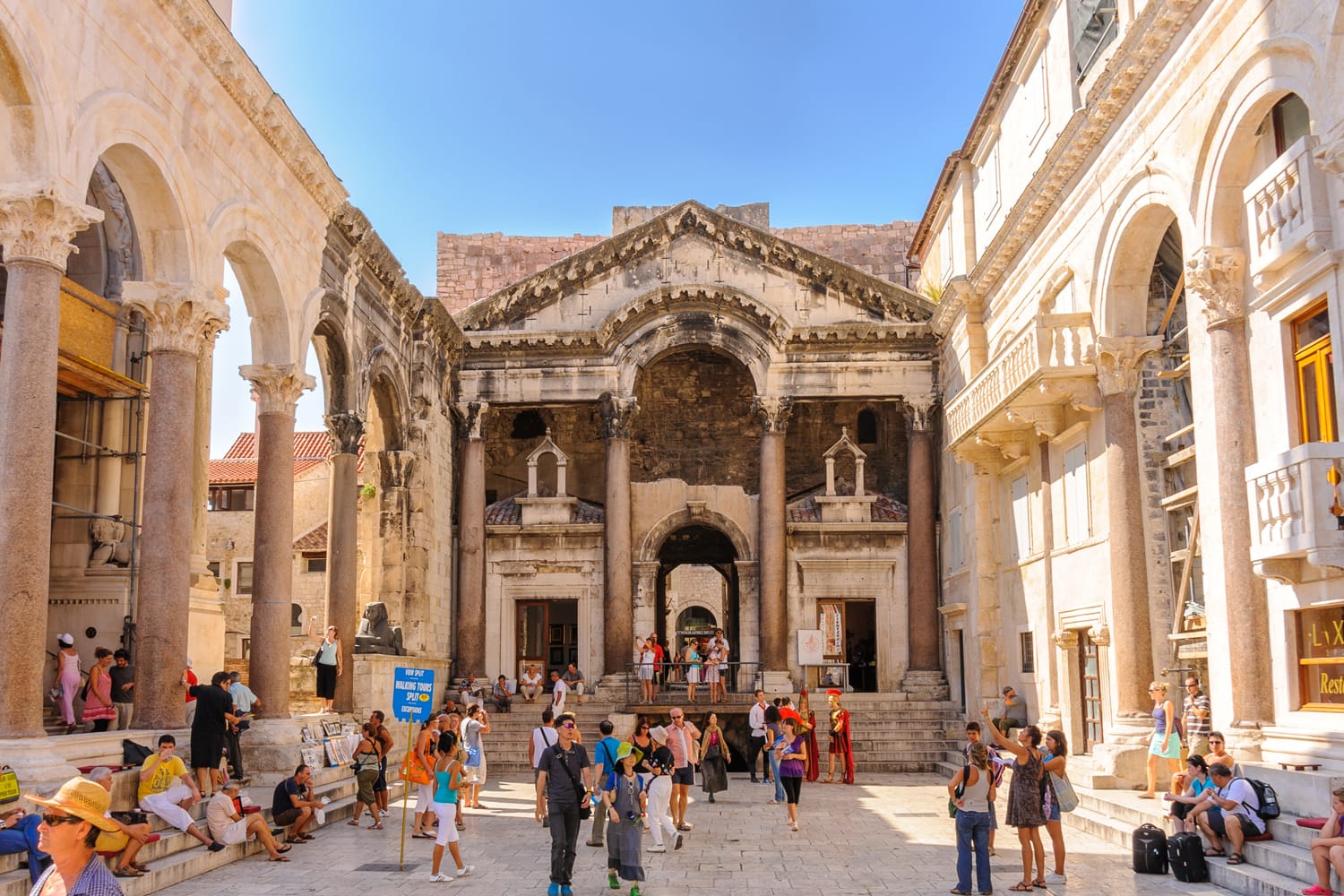
Peristyle
Every visit to Split should include a stop in the main square of Diocletian’s Palace, the Peristyle. This is a great place to see what the city looked like in the days of ancient Rome. The Peristyle features not only ancient architecture, but also a pair of sphinx statues that Diocletian himself brought to Split from Egypt.
Tourists love to sit around the sides of the Peristyle, soaking in its ancient feel. It’s also common to see Roman reenactments on the balcony of the Vestibulum, increasing the sense of having traveled back in time.
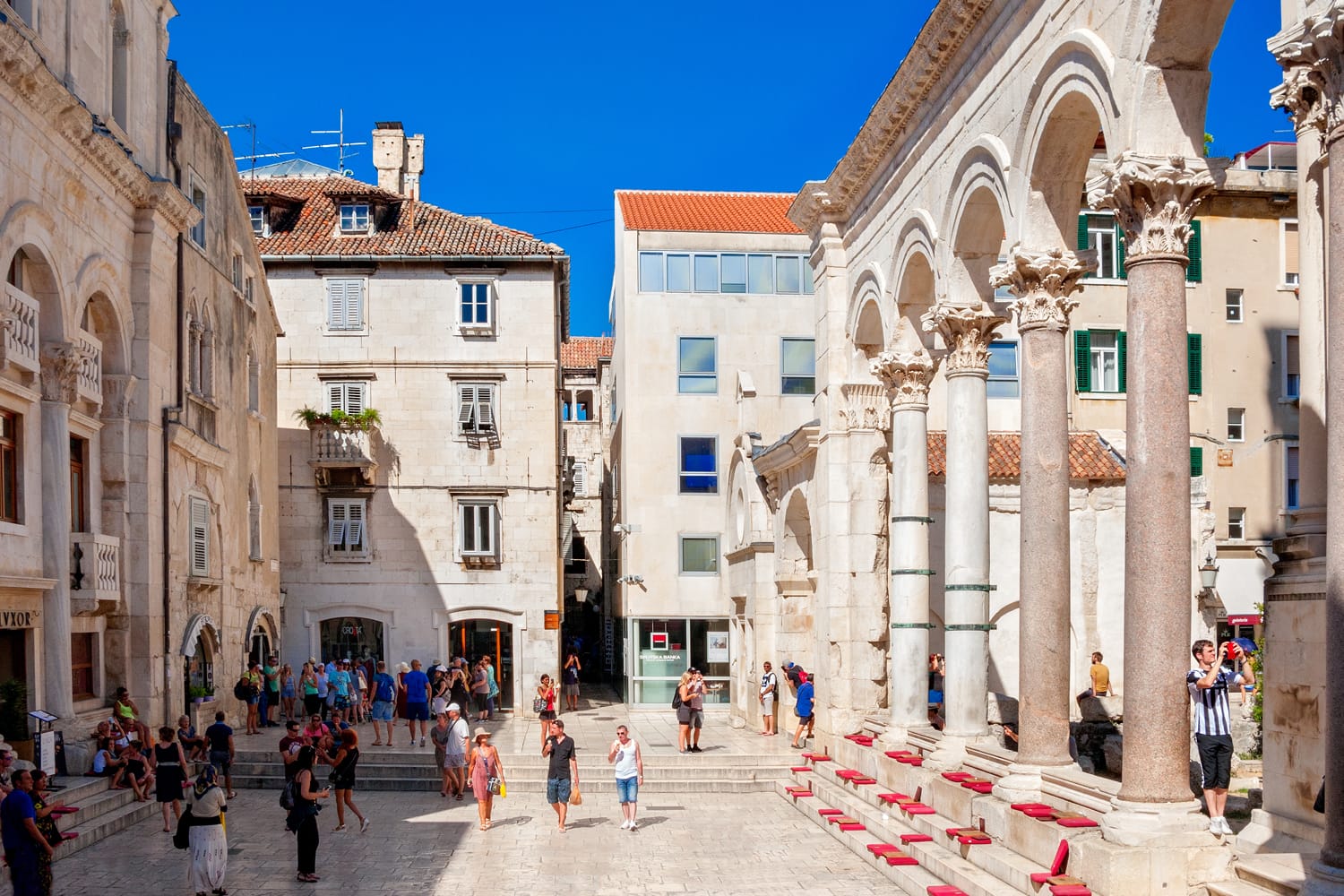
Podrum Underground Market
Go down the stairs from the Peristyle under the Vestibulum to find Podrum, Split’s moody underground market. While many of the wares now sold here are souvenirs for tourists, it’s hard to deny the ambience of this maze of ancient cellars. As you walk through, look up at the stone arches and pillars that secure the ancient landmarks above you.
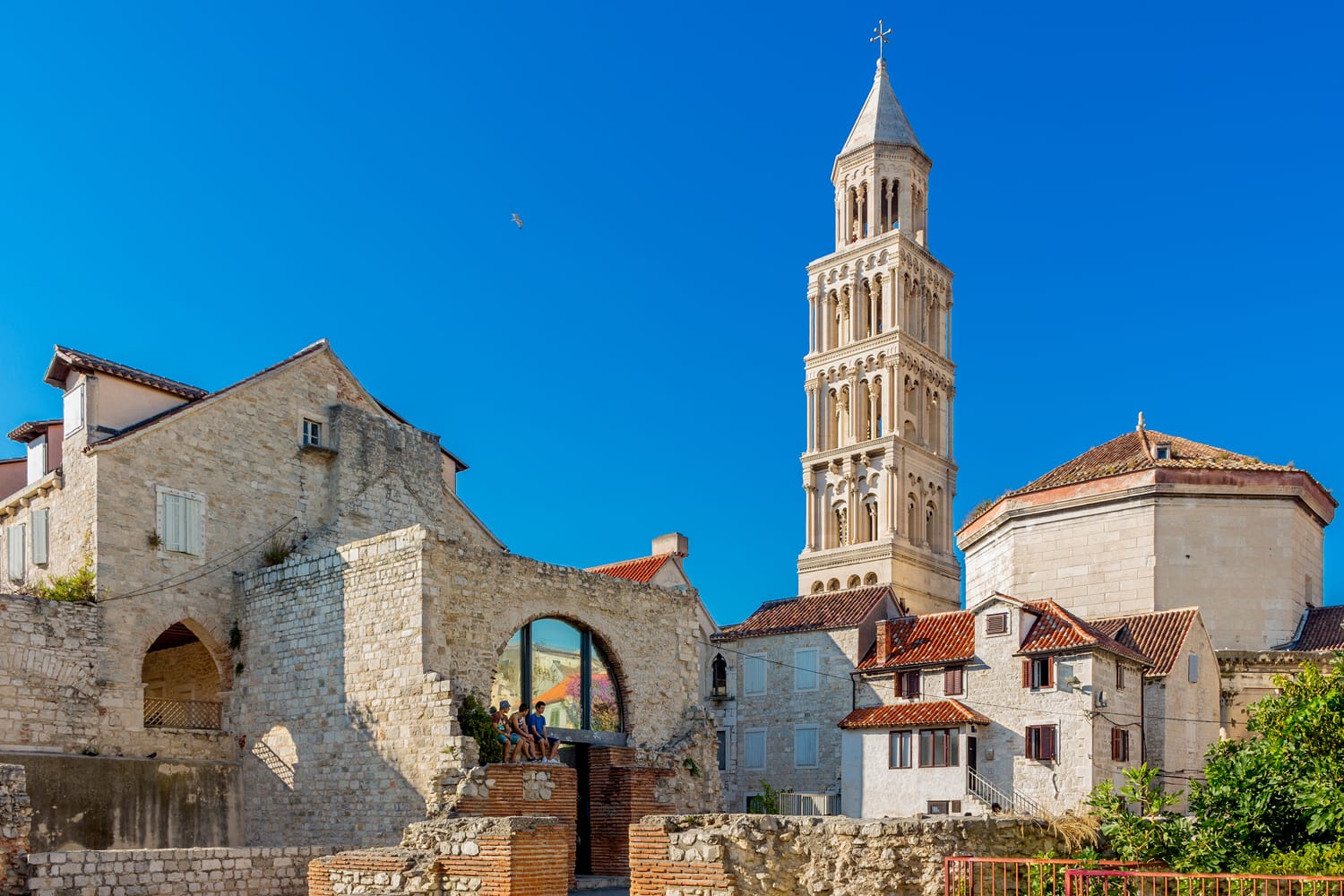
St. Domnius Cathedral and Bell Tower
It’s a short walk from the Peristyle to the Cathedral of St. Domnius, one of Split’s other major landmarks. Originally a mausoleum for Diocletian, the cathedral is part ancient Roman temple, part Catholic church. It was built in 305 A.D., making it one of the oldest structures of any Christian church in the world.
While it’s worth taking some time to admire the ancient cathedral, the best thing to do here is to climb the bell tower. You’ll be rewarded with the absolute best views of Split as you look down to Diocletian’s Palace, the waterfront, and Marjan Hill.
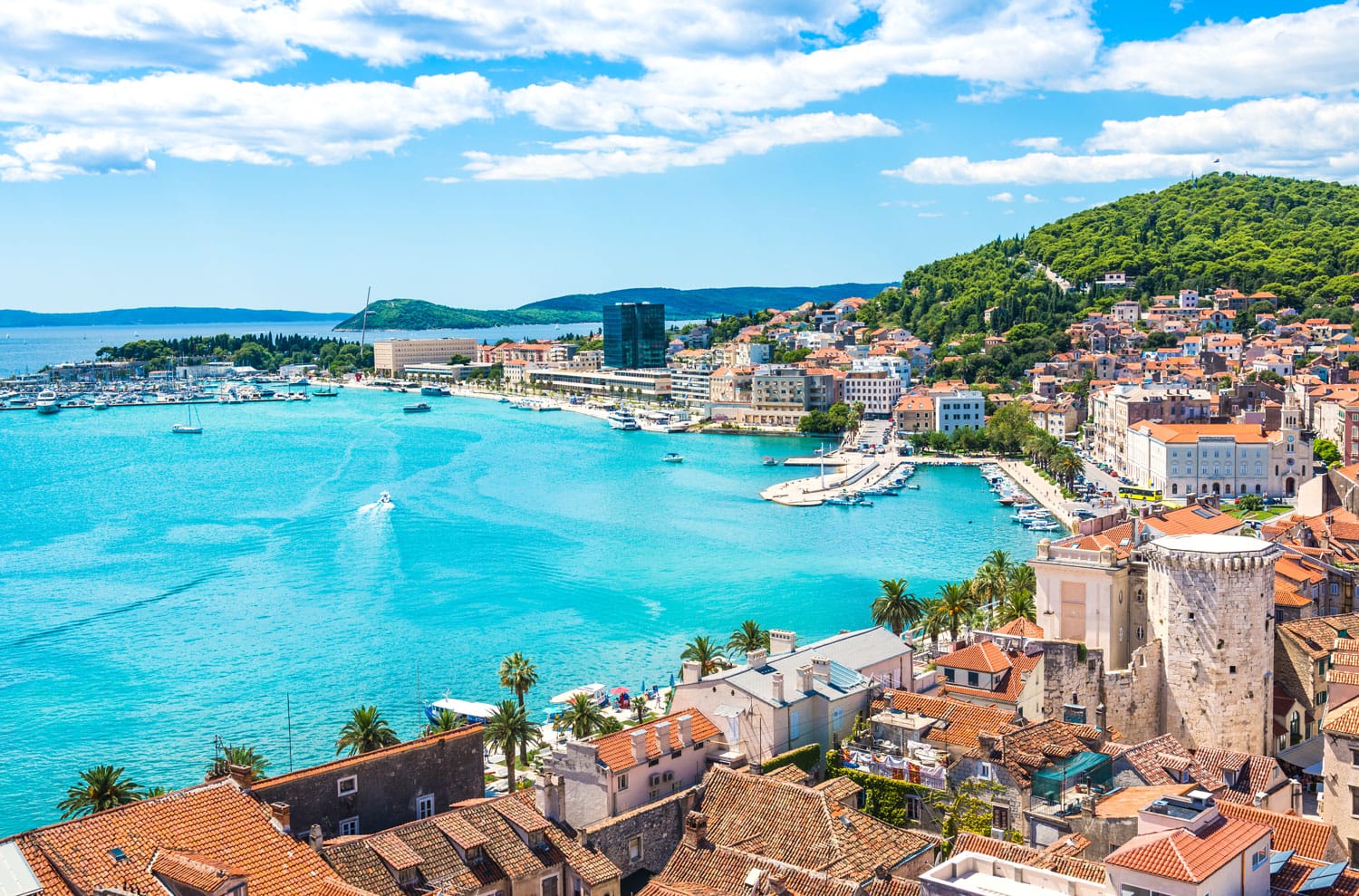
Bačvice Beach
If you simply can’t wait to find some sand and dive into the warm Adriatic waters, head to Bačvice Beach. This is one of Split’s most popular and accessible beaches, located just around the point behind the ferry terminal. You’ll surely find more picturesque beaches along the coast and on the islands, but this city beach is as local as it gets and will do in the meantime.
Marjan Hill
For a green escape, look no further than Marjan Hill, which overlooks the city center. Just a block from the waterfront is a long staircase that gradually takes you up the hill, first past homes and eventually to a prime viewpoint at Telegrin Peak. From here you can not only see Split, but right out along this beautiful bit of Croatian coastline. The parks across Marjan Hill not only are great for gentle walks, but also feature several chapels and a handful of beaches, such as Kašjuni Beach.
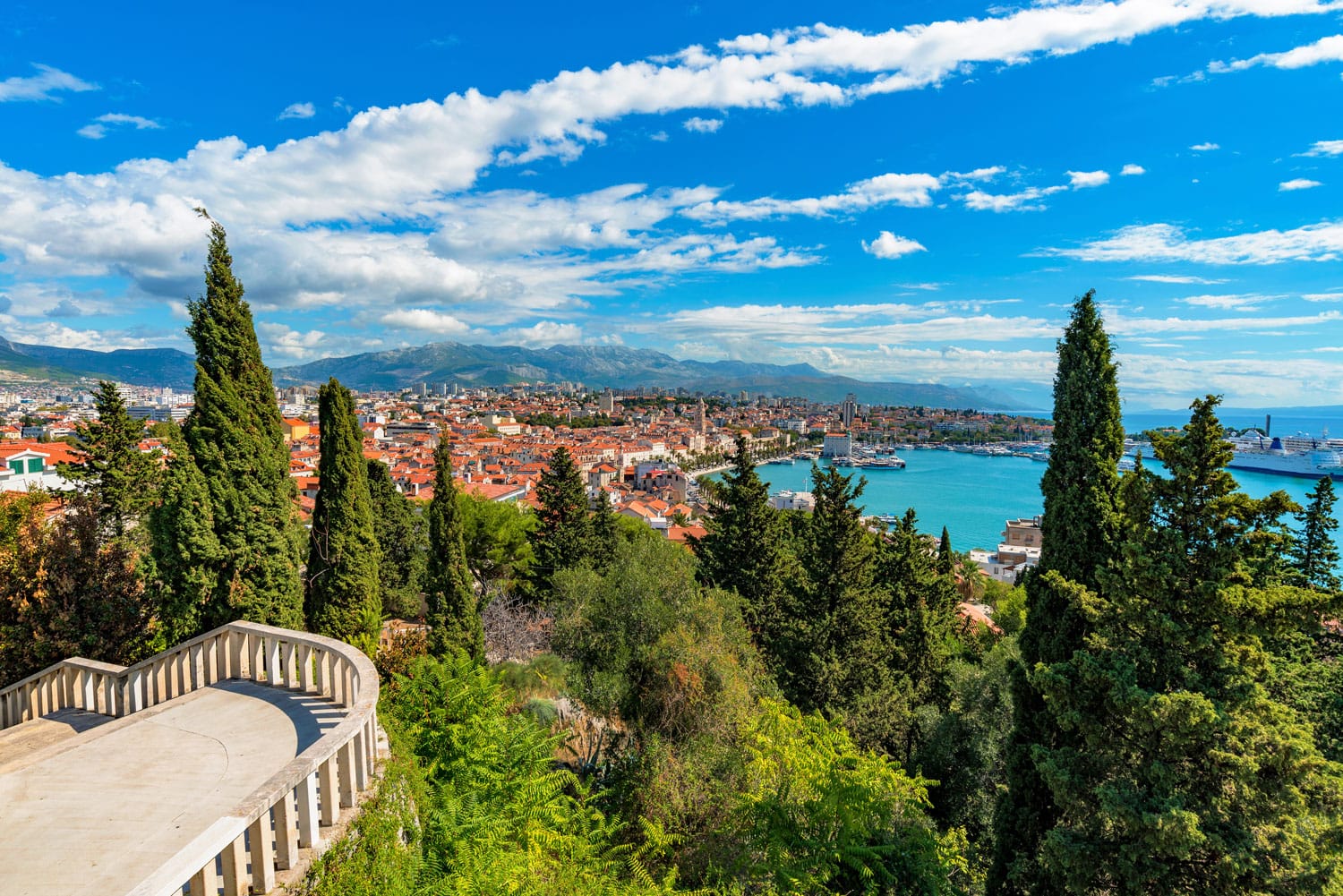
Riva Waterfront Promenade
The perfect way to end your first day in Split is with a stroll along the Riva, the city’s waterfront promenade. Paved with marble and lined with palm trees, it’s exactly the kind of beautiful waterfront you’d hope to find on the Dalmatian coast. Take a seat at one of the many bars and restaurants along this popular thoroughfare to watch ferries and yachts sail away from the city. From here, you’ll be treated to a pretty sunset in one of Croatia’s most scenic spots.
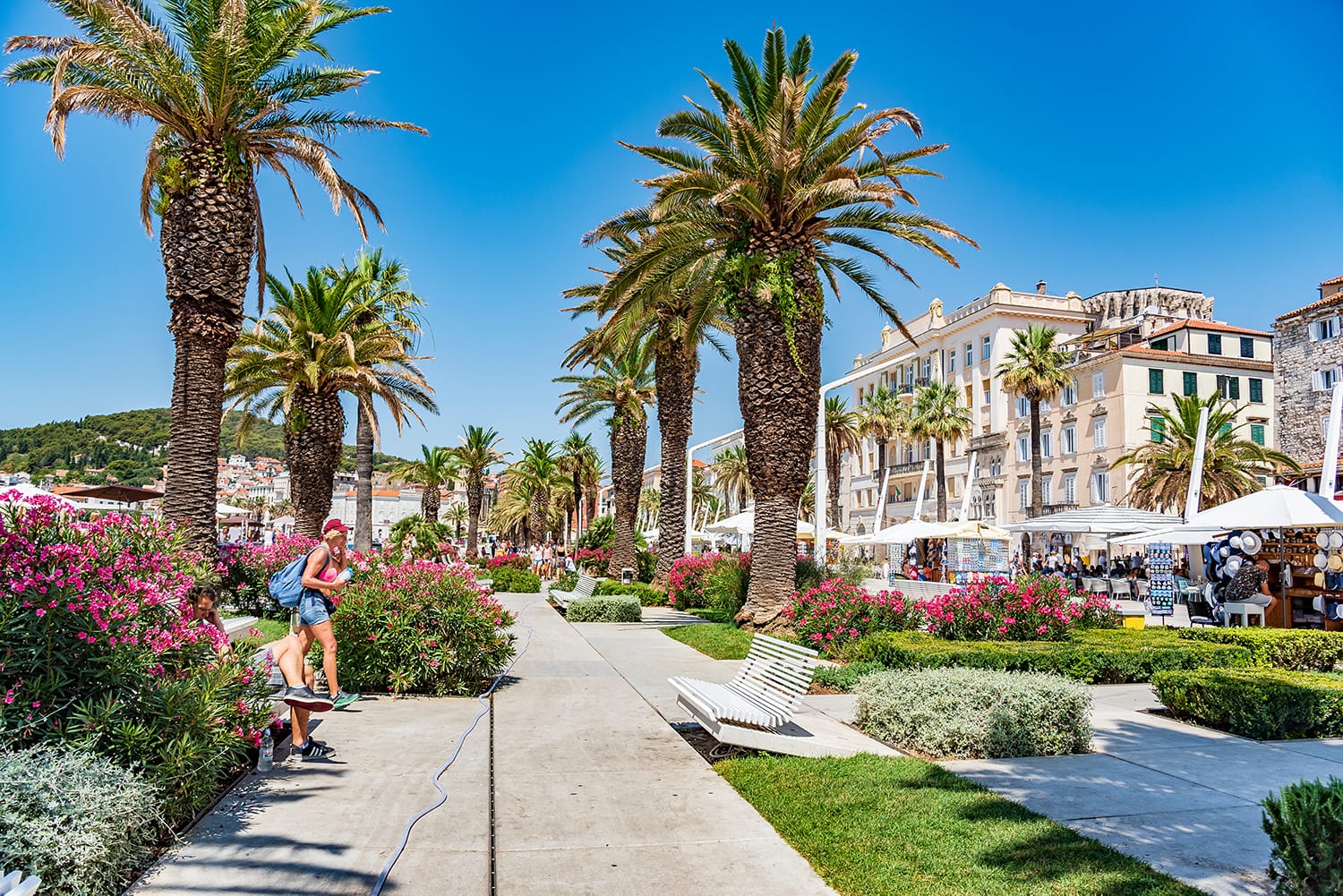
Day 2 in Split
With a long weekend in Split, you’ll have enough time not only to see the city but also to take in its awesome surroundings. The best way to cover serious ground is to take a five-island tour, which will show you some of Croatia’s best coastal spots. You’ll typically visit Hvar, Biševo, Vis, Ravnik, and Budikovac.
Recommendation: Most travel agencies in Split can book you a spot on a five-island tour, but this particular tour sells out quickly. It’s best to reserve your spot online in advance, especially if you plan to visit Split in the high season. You can book your spot on a five-island tour here.
Biševo
A visit to the small island of Biševo, which is the farthest of these five islands from Split, focuses on the enchanting Blue Cave. Though it’s one of many caves on Biševo, this flooded sea grotto is illuminated from underwater at certain times of day, giving it an ethereal shimmer and glow that you can see from your boat.
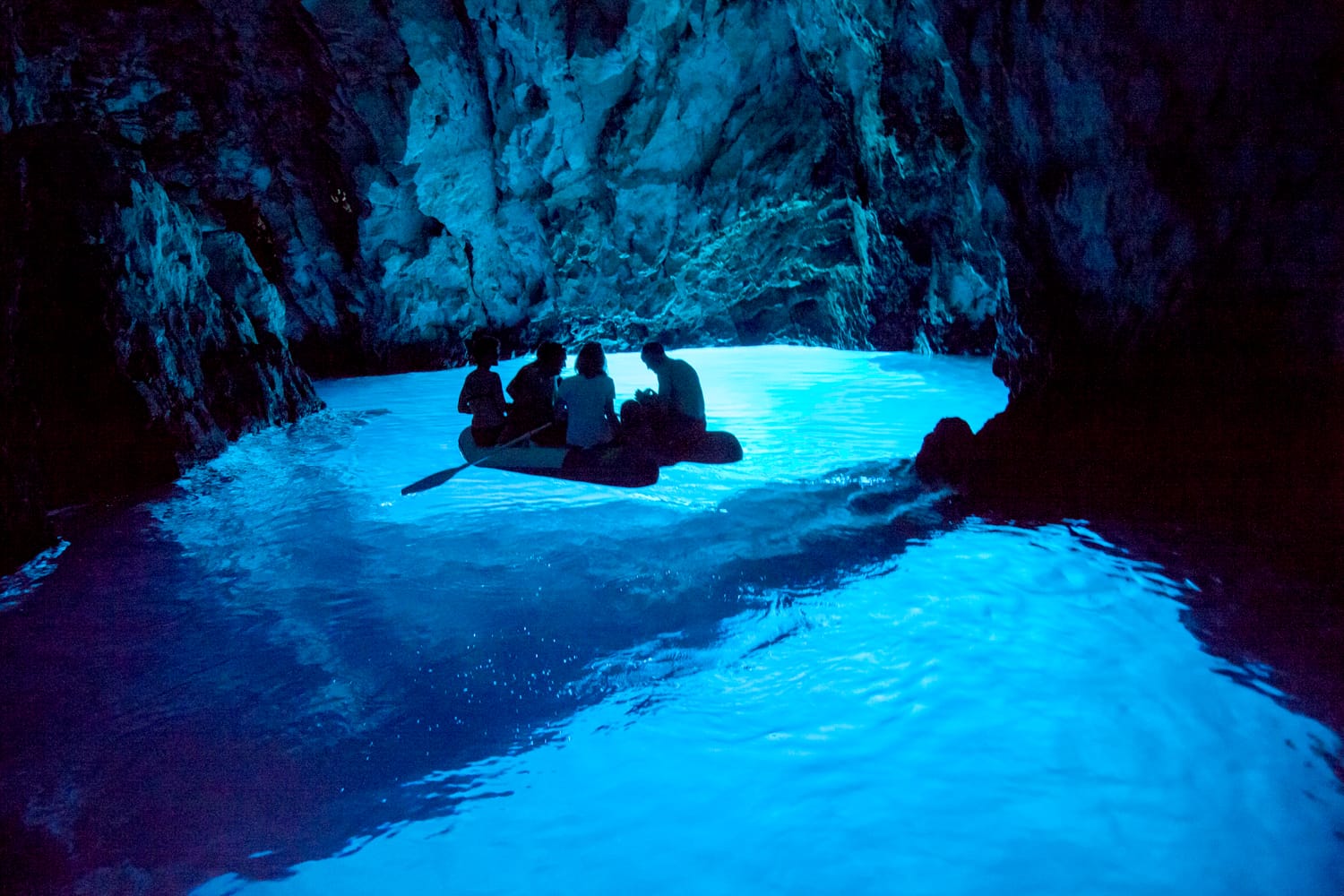
Vis
Next is the larger island of Vis, where you’ll dock at the picturesque fishing village of Komiža. With its quaint stone buildings and Mediterranean architecture, Komiža is a great place to stroll around. Farther along the coast, you’ll stop at Stiniva Cove, a secluded beach perfect for snorkeling and swimming.
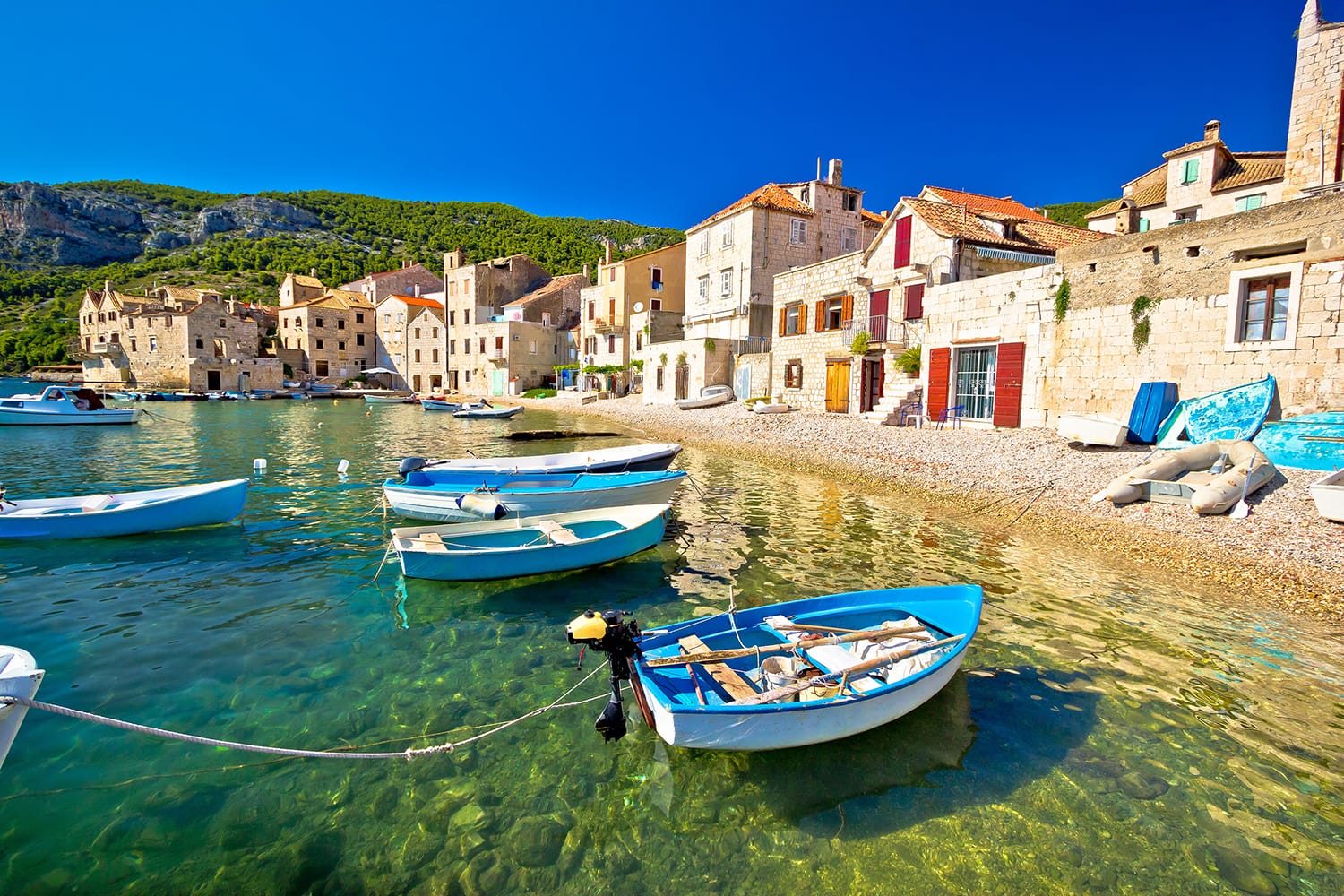
Ravnik
Ravnik, one of the small islands off the coast of Vis, is known for the Green Cave. Unlike the Blue Cave, the Green Cave is illuminated by a small opening in the ceiling that combines with algae on the walls to give the grotto a dazzling green glow.
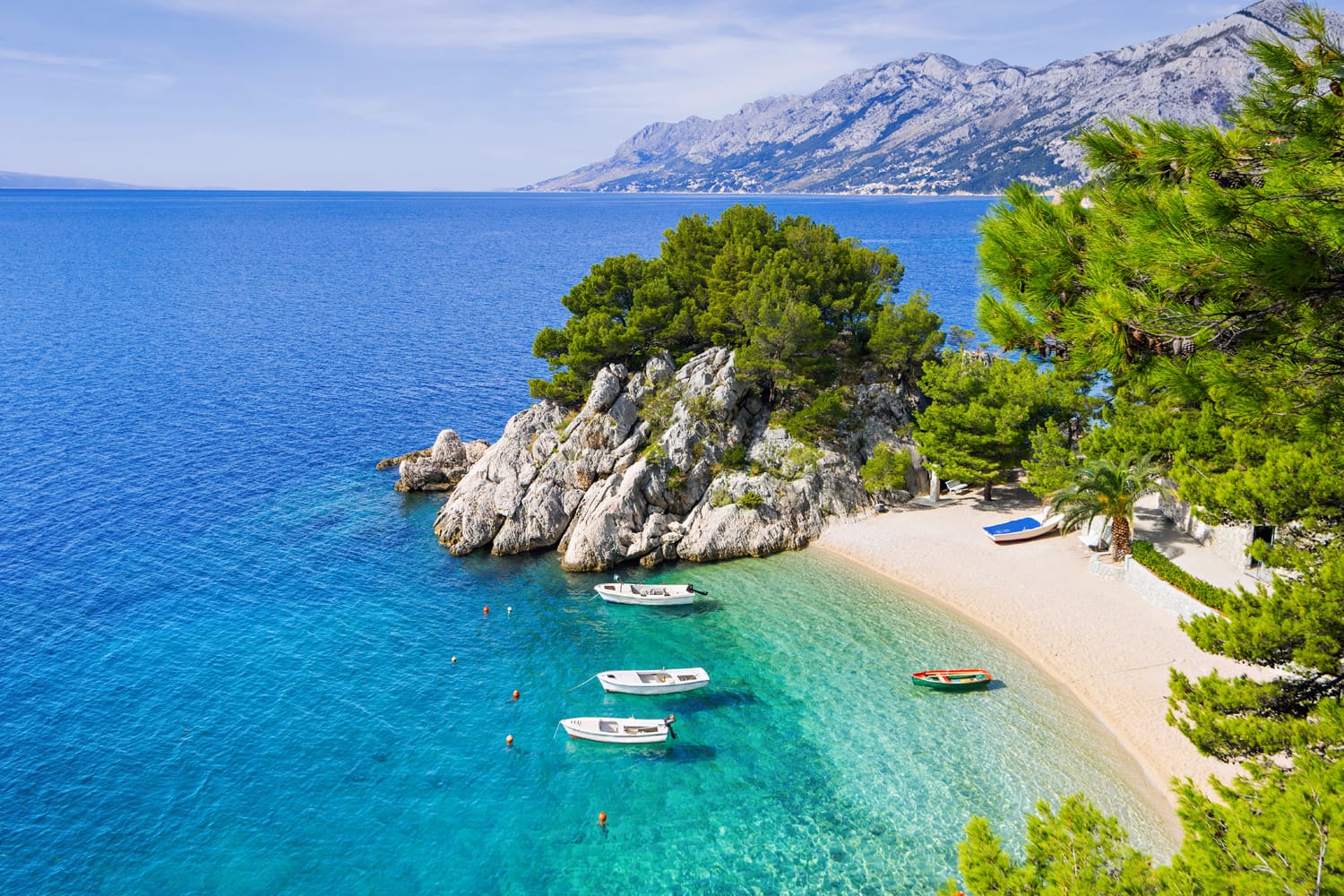
Budikovac
Right along from Ravnik, you’ll find the island of Budikovac and its beautiful Blue Lagoon. The shallow, crystal-clear water makes it a popular stop for swimming and snorkeling. The lagoon is hidden between three tiny islands, so you can bask in its seclusion as you admire the local marine life.
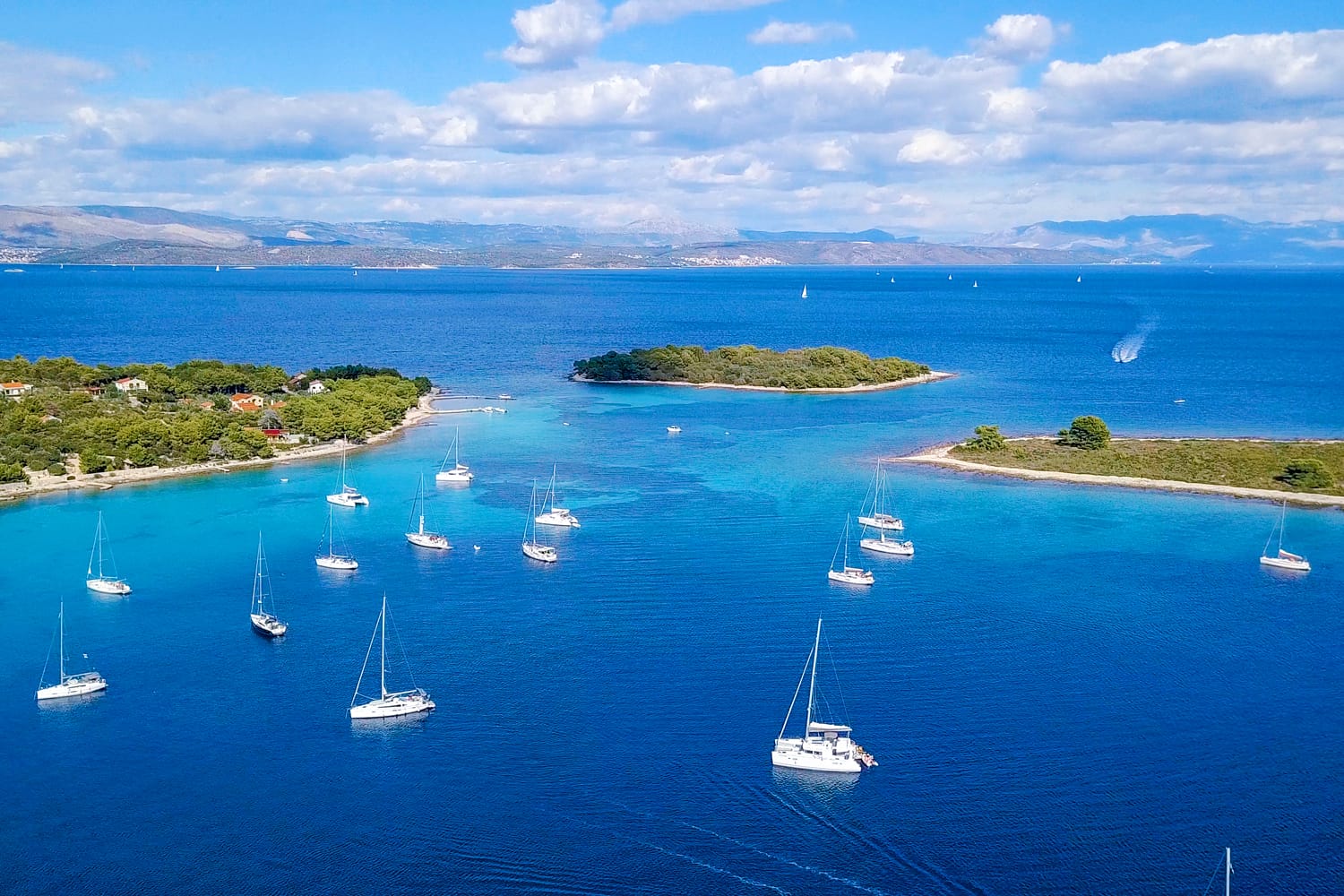
Hvar
Hvar, the largest and most popular island destination in Croatia, is the last stop on the five-island tour, letting you explore its wonderful harbor town and heritage landmarks. Two spots to prioritize are the Cathedral of St. Stephen and Fortica above it. This fortress is worth the climb for the views over Hvar and nearby islands.
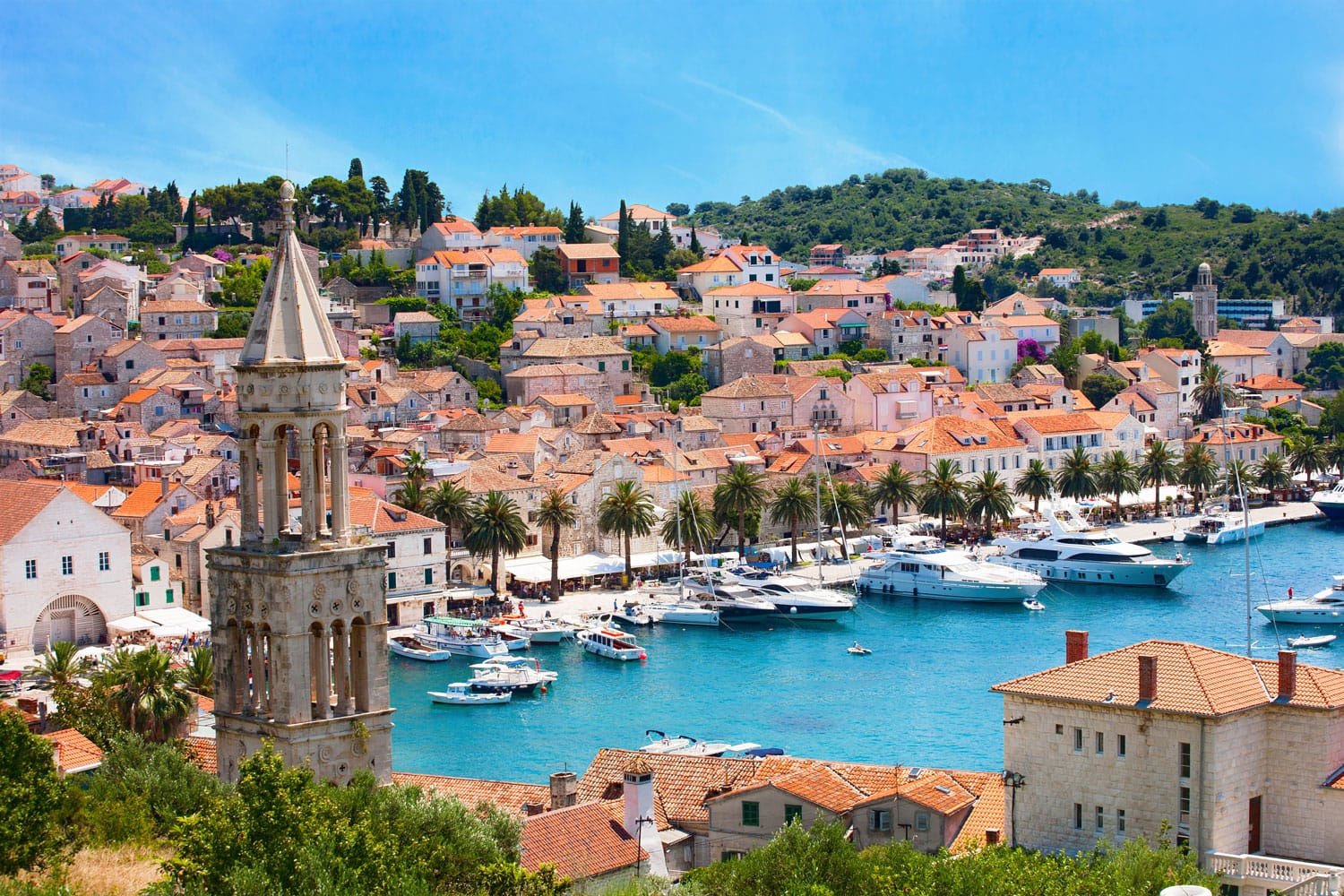
Day 3 in Split
Though you could spend more time sightseeing or basking on the beaches in Split, don’t miss your chance to see more of the region with another day trip. You might be surprised by just how many of these day trips from Split visit essential places from our ultimate Balkans itinerary.
Trogir
Located just north of Split along the coast, the scenic town of Trogiris an easy day trip. In some ways, it’s a smaller, less crowded version of Split, boasting various Venetian-style buildings. With a quick walk through the Old Town, you can see plenty of charming historic buildings and the yacht-lined waterfront. Besides visiting the Kamerlengo Castle (which is hard to miss), you’ll want to seek out beaches like Rožac and Okrug Gornji.
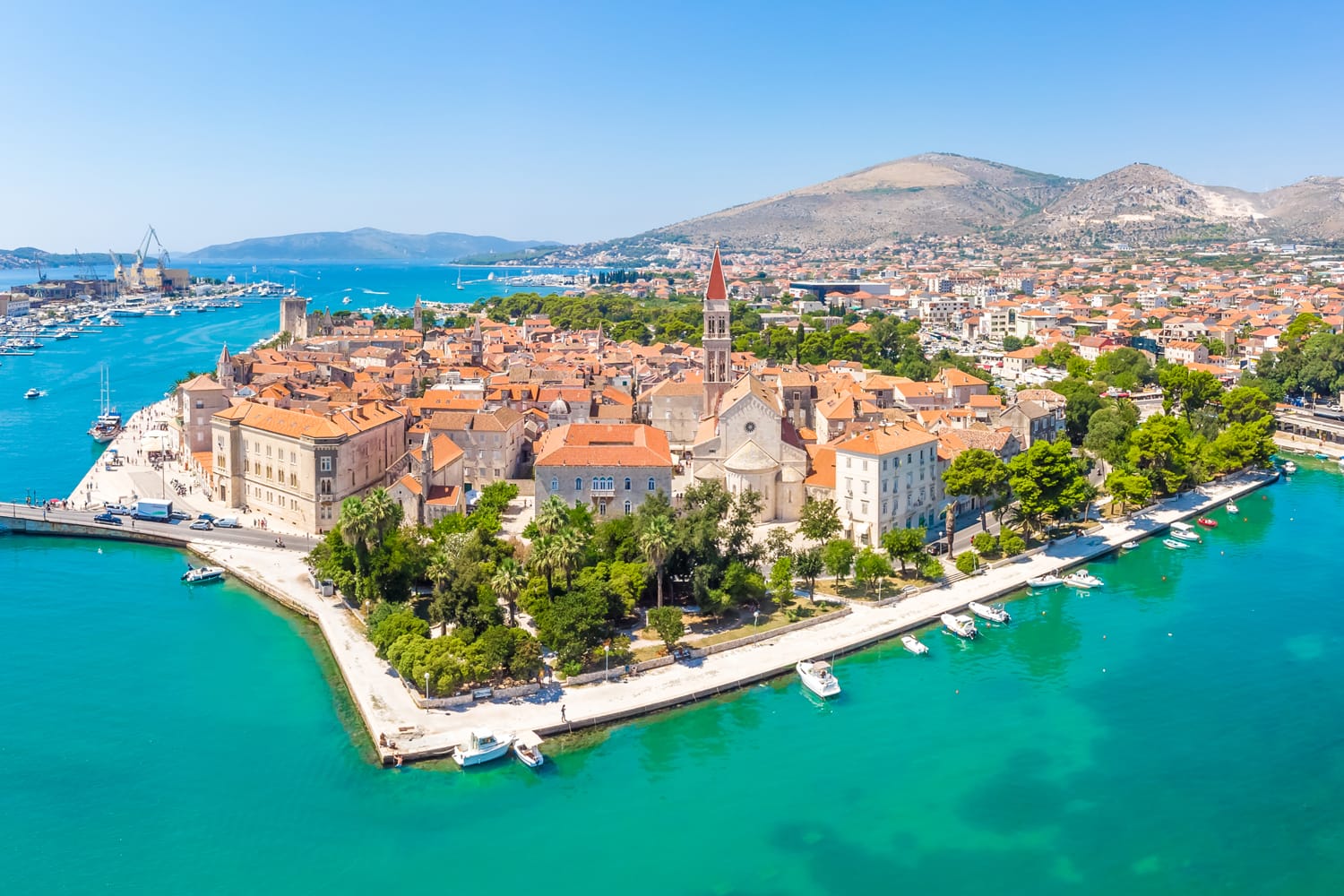
Krka National Park
Besides its coastline, the other feature Croatia is famous for is its enchanting waterfalls. One of the most visited waterfall sites is Krka National Park, which is just northwest of the city of Šibenik. Home to seven waterfalls that flow over small cliffs lined with lush vegetation, Krka is a beautiful sight to behold. You can even swim in the freshwater pools below the falls. Another common activity here is hiking the many nature trails that span the park. You can book a day tour to Krka National Park here.
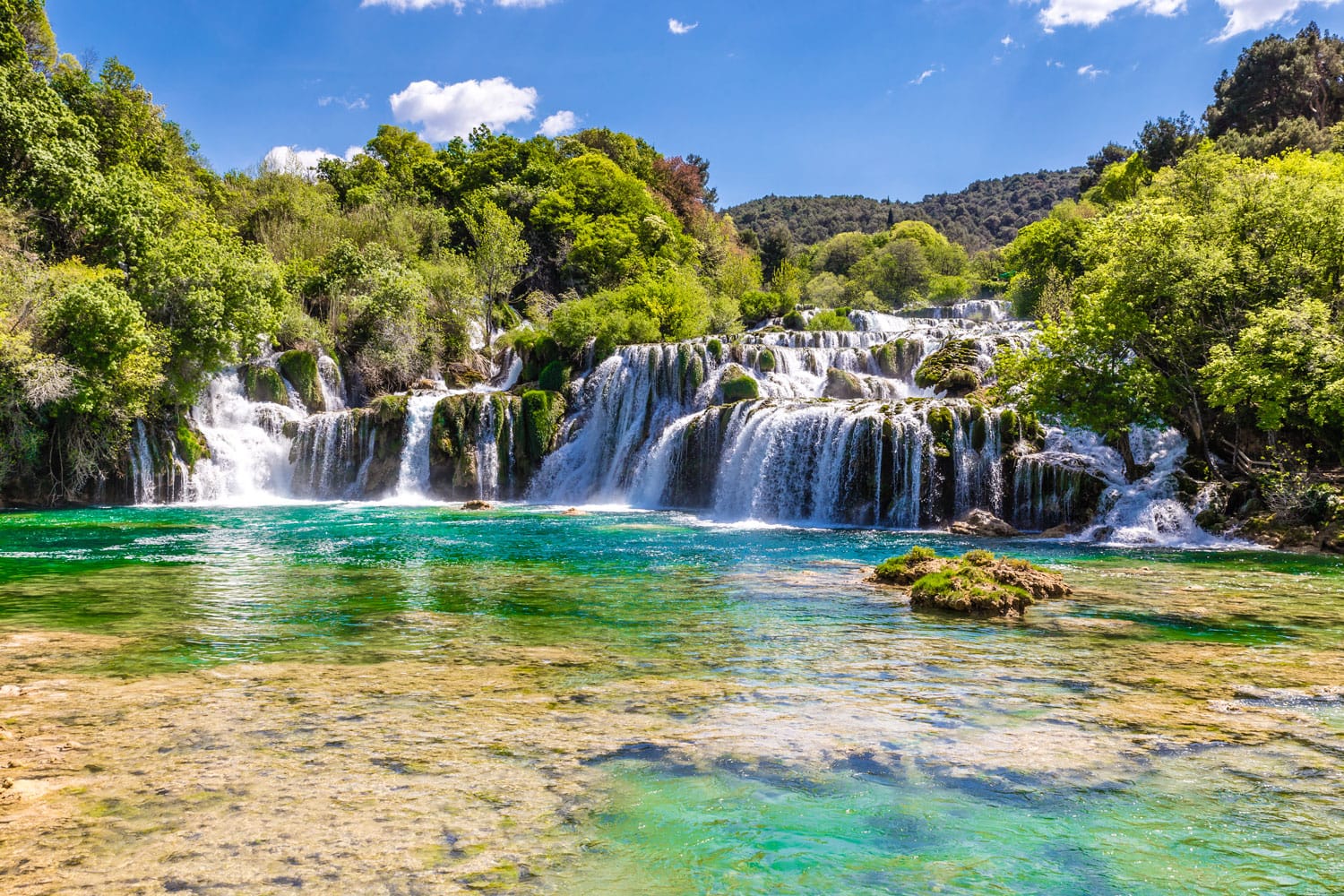
Plitvice Lakes
The other famous place to see waterfalls in Croatia is Plitvice Lakes National Park, which makes a great day trip from Split despite being considerably farther away than Krka. This UNESCO World Heritage Site features 16 lakes, each with a waterfall cascading into the next. With the beautiful sight of each waterfall, the vibrant colors of the water, and the amazing surrounding nature, the Plitvice Lakes are truly breathtaking.
You can wander the boardwalks over the lakes or hike up along the tree line, then enjoy a boat ride across the park’s largest lake. Learn more in our Plitvice Lakes National Park guide, or click here to book a day tour to the Plitvice Lakes.
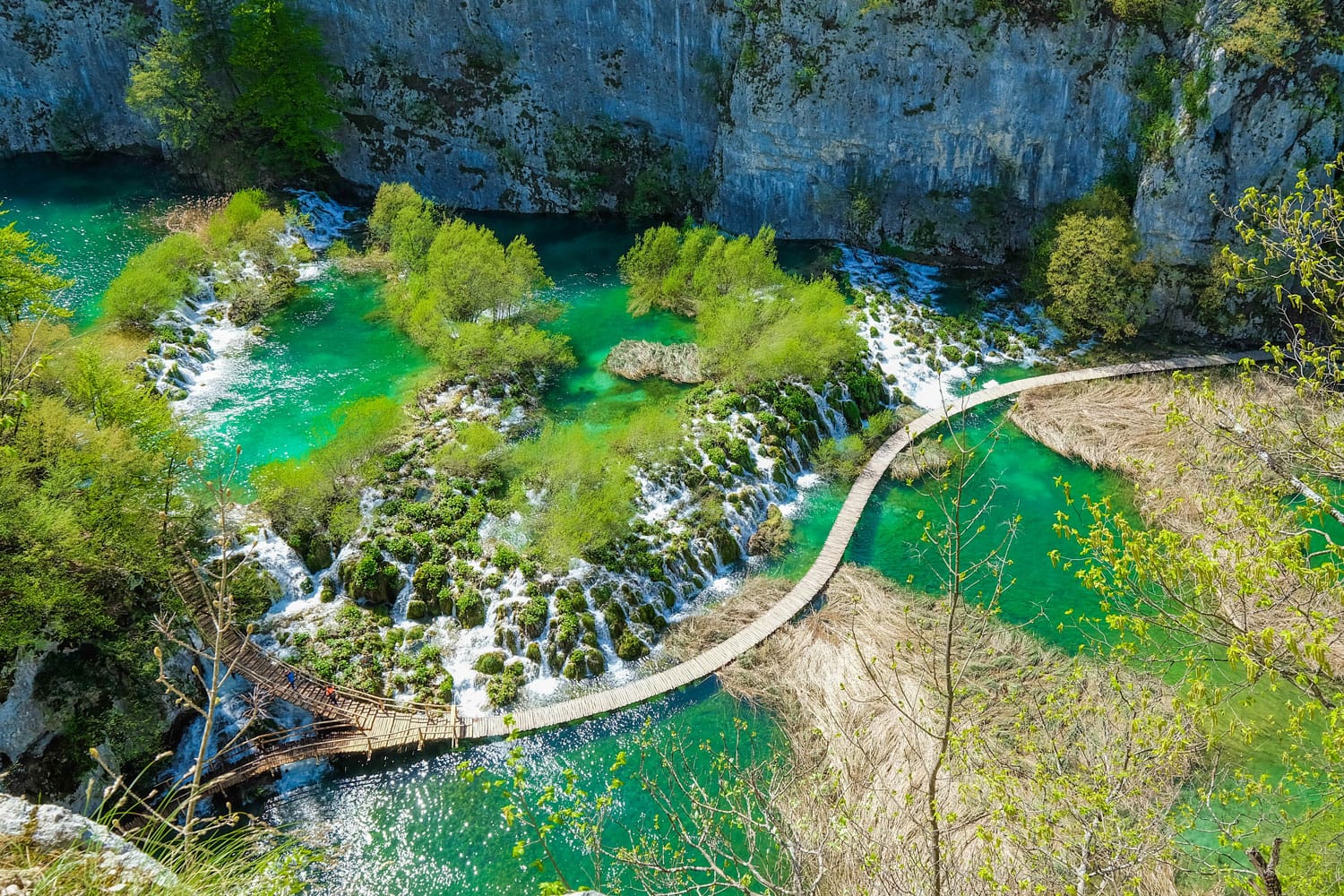
Mostar
You don’t have to limit yourself to Croatia when planning day trips from Split. In fact, one of the best day trips is right across the border to Mostar in Bosnia and Herzegovina. Mostar is home to a scenic Old Town on both sides of the Neretva, where you can watch local young men dive into the river from the iconic Stari Most (Mostar Bridge). As you wander the Old Town streets and the Kujundžiluk (Old Bazaar), look out for the Koski Mehmed Pasha Mosque and its fantastic river views.
There are also wonderful sights just out of town, such as the Blagaj Monastery and Počitelj Castle. For more ideas, read our dedicated Mostar itinerary. You can book a day tour to Mostar here.
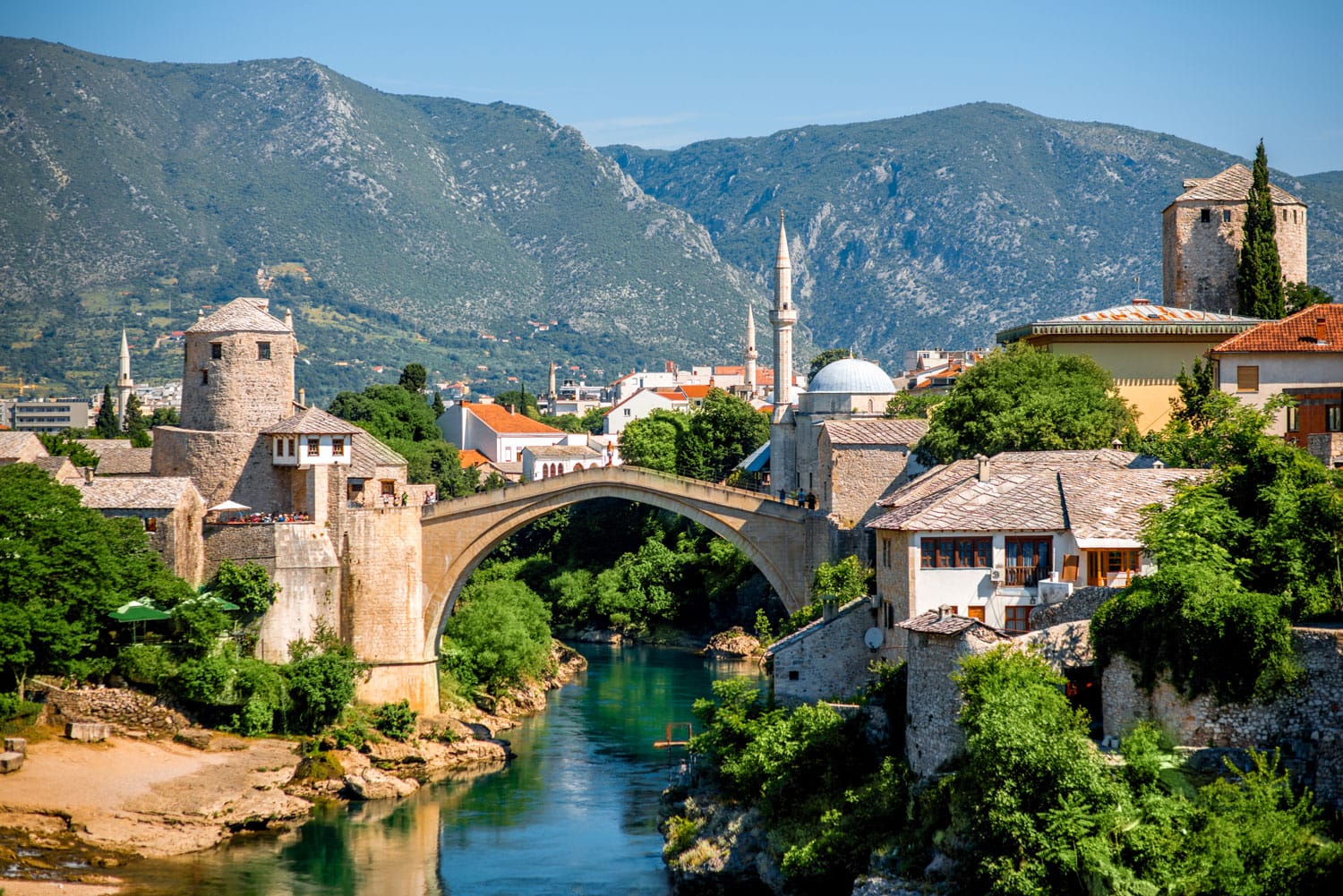
It should be plain to see just how much there is to see and do around Split in three days. Clearly, Split is one of Croatia’s most beloved destinations for a reason.


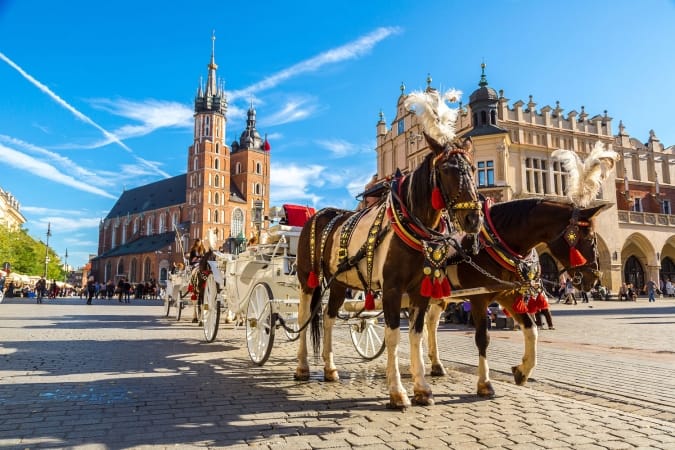
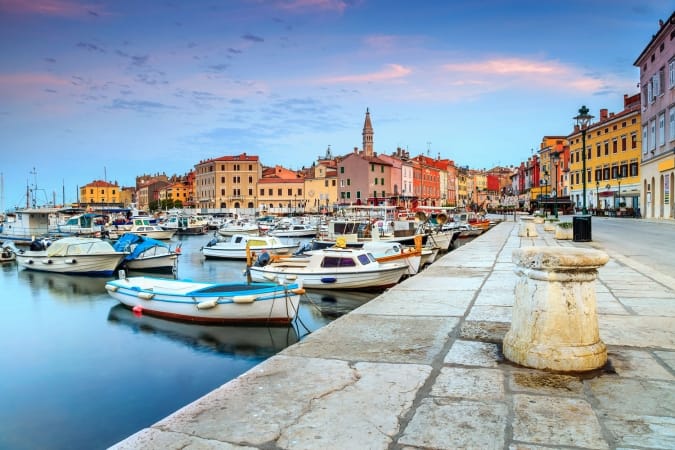
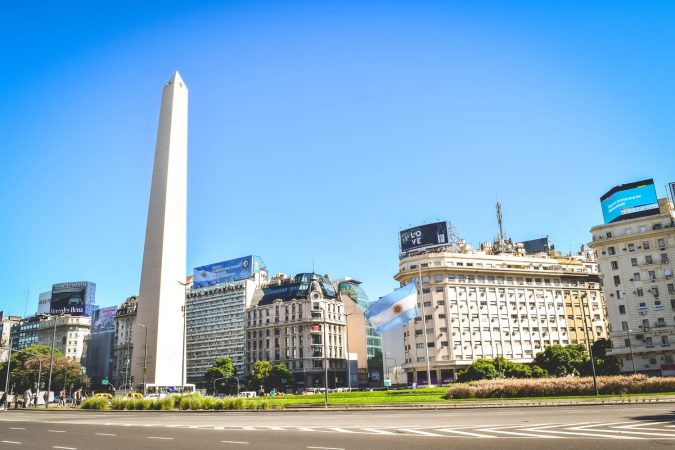
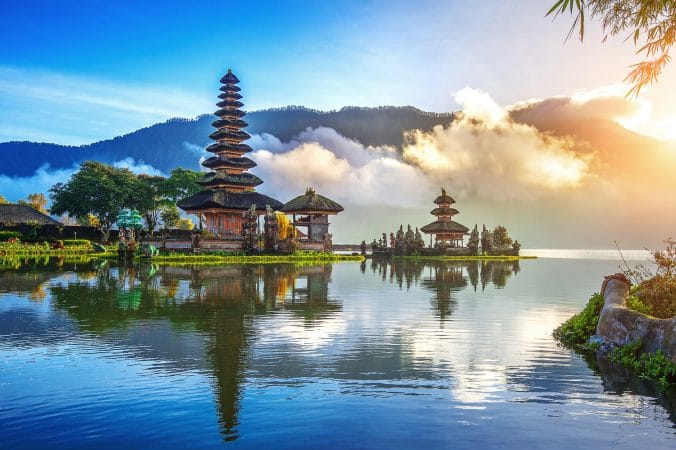
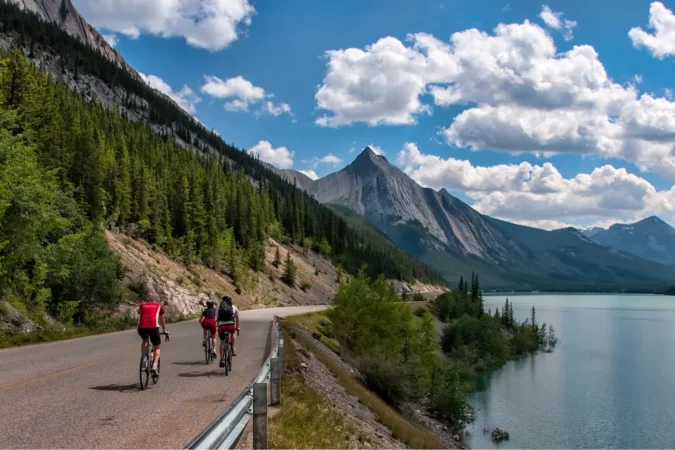

Comments